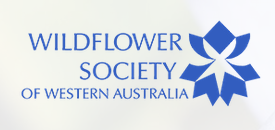I’ve now been in Florence for a week but it feels like much more than that, we have done and seen so much! I’m working with the University of Florence and Siena Province on the application of the first northern hemisphere trial of INFFER. You can read more about INFFER on our dedicated page here.
The current application is on Lucciola Bella, a nature reserve in Siena Province recognised for its steppic vegetation communities which provide habitat for numerous endangered steppic bird species. The reserve forms part of the Val d’Orcia (Orcia river catchment), which is a UNESCO World Heritage Area, nominated for its unique agricultural and pastoral landscapes. What this means is that’s it’s incredibly beautiful! The reserve is entirely contained within private farms (i.e. it’s privately owned), with the agricultural pursuits undertaken there of vital importance to the income of the farmers. For this reason, any project proposal must be negotiated with the local farmers and be a compromise between nature conservation and agriculture.

Calanchi and biancane formations in Lucciola Bella, Siena Italy; one of the vital habitats for steppic birds
Close-up of the calanchi (Italian for gullies) formed in these highly erosive soils

The Formone river, showing low riparian vegetation structure; another vital habitat type, especially for the Occhione species
There are two main threats to the bird habitat – reforestation of the Formone riverbed and the relatively recent conversion of grazing land to cropping, particularly in hilltop areas. Studies have shown that the ideal habitat of the endangered birds is diverse open grassland on hilltops; this vegetation type formed under the historical sheep and cattle grazing regimes which were abandoned in the 1980s in favour of cropping, especially Durham wheat cropping, as a result of government subsidies. Croplands pose two key problems for the avifauna – firstly, the monocultures result in a greatly reduced biodiversity, meaning that habitat values are reduced or removed altogether; secondly, as the birds are ground-nesting, harvesting of crops leads to the destruction of nests and potentially of eggs and chicks.
The proposed project focuses on working with local farmers, several of whom we have met with over the last week, to re-establish at least 100 hectares of avifauna habitat, specifically converting hilltop croplands contiguous with other areas of pasture or natural habitat areas (of which there is little remaining) to unharvested pasture. Avifauna surveys undertaken in 2006/07 found that 100 ha is the minimum extra amount of habitat required in Lucciola Bella reserve.
INFFER allows us to fully investigate the proposal, including the consideration of different ways of achieving the stated outcome (to increase steppic avifauna habitat) and what the pros and cons of each option would be. We can look at incentive options, such as annual stewardship payments or the contribution of funds to infrastructure change. An example of the latter could be to subsidise investment in sheep-cheese manufacturing equipment, allowing farmers to add value to their new grazing enterprise. We can look at the availability of technical information that would be required in order to implement the project, and make judgements based on this and other things about how successful the project is likely to be in terms of achieving stated goals.
As a direct result of INFFER, we are forming strong and often new partnerships with and between farmers, local authorities and provincial departments, all of whom have a stake in the project. Excitingly, INFFER is proving to be just as valuable a tool in an Italian/European context as it is in Australia.
University staff will continue to work on the Lucciola Bella INFFER while I travel to London next week to meet with other potential INFFER partners. I’ll miss Italy and the team here – I’ve learned so much about nature conservation and the management of natural resources in an Italian context, about Lucciola Bella and its history (they actually exploded all the hills with dynamite to create the incredible expanse of gently rolling hills that the Val d’Orcia is now famous for – none of that is natural… amazing!), and have thoroughly enjoyed being able to practice and further develop my Italian-speaking skills. It’s been absolutely fantastic. I’m looking forward to coming back at the end of the trip so we can spend some more time on the project together.







